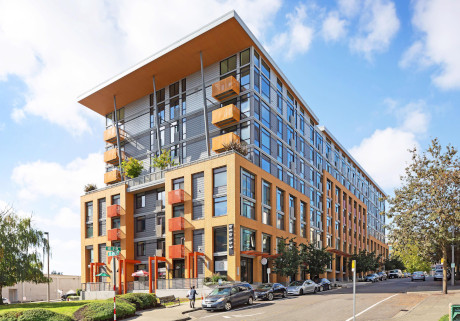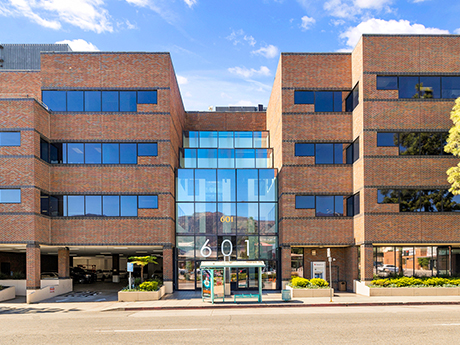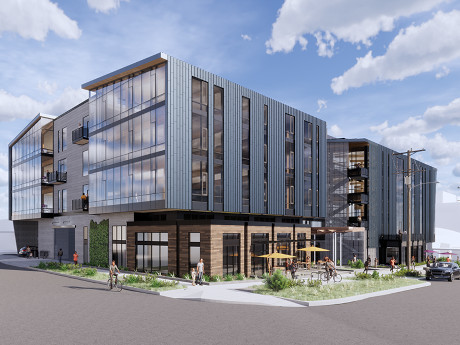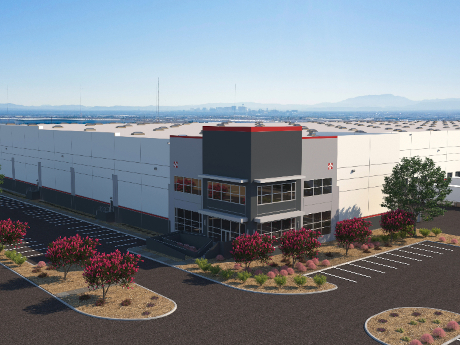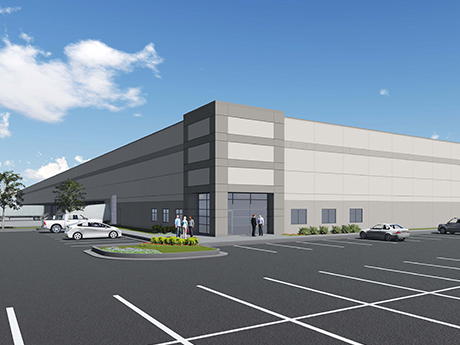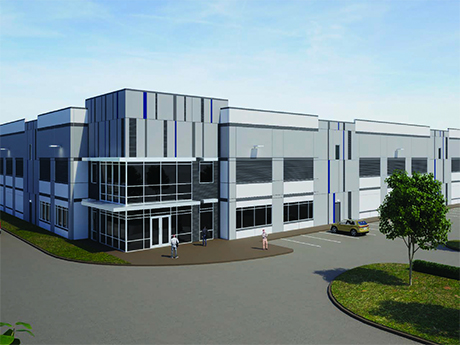— By Steven Chattin, Managing Director, Berkadia — Nationwide, inflated interest rates are significantly impacting property values. In the Seattle metro, cap rates are increasing while values decline and bridge debt rates hover at 8 percent or higher — non-starters for many multifamily investors. The common play is to secure favorable short-term financing for if and when rates come back down. Due to these factors, family offices, high-net-worth individuals and private capital groups are the most active players in today’s market. Lenders are also feeling the impact of the economic environment, with the current depth being extremely shallow for competitive options. As transactions slow, some players are scaling back or stepping out of certain arenas entirely. Umpqua Bank recently shuttered its multifamily lending operation on the West Coast. According to second-quarter data provided by CoStar, multifamily sales volume has decreased by 50 percent year over year. Agency debt is most favored right now with fixed rates preferred over floating rate debt. Where available, loan assumptions are generally the most attractive option and have bridged many deals across the finish line. Challenges aside, many developers are staying busy as evidenced by the nearly 12,000 additional units projected within the Seattle-Tacoma metro …
Market Reports
— By Scott Romick — The Western region is going through a lot of changes when it comes to the office market. Downtown San Francisco, in particular, was a large tech hub with so much infrastructure prior to the pandemic, but it’s currently become more of a ghost town. Because hybrid and remote work is common now, many of the workers who are back to the office have moved to local submarkets that offer faster commutes, more efficiency, affordability and other key factors. Southern California, on the other hand, is a growth market. Suburban areas like the San Fernando Valley’s Sherman Oaks — which has become more active than the West Valley — continues to expand its population. This helps the office market as well as existing and new retailers. Even pockets like Encino, Studio City and Burbank have become more populous, attracting a young workforce given their proximity to local restaurants, coffee shops and parks. Unfortunately, Downtown Los Angeles is still struggling to recover as a central business district, Century City is rebounding slowly and Santa Monica is shifting in its downtown area, given the nature of office structures and their footprints. Hybrid & Regionalized Real Estate The hybrid work …
As Richmond continues to grow, its relative value points to prosperity in the market for years to come. Having grown our company in Richmond, we’ve witnessed the transformative momentum and tremendous change firsthand. Specifically, the diverse employment base has continued to expand through economic strength and migration trends, increasing not only population but also multifamily demand and asset performance. Strong economics support Richmond’s stability. Richmond’s diverse employment base empowers a resilient market with high-growth potential. The MSA is home to 11 Fortune 1000 companies and a robust private sector, encompassing hospitals, energy companies and financial services. The economy is stabilized by the presence of many institutions of higher learning, along with substantial medical and life sciences users. Numerous major corporations have announced or recently completed large expansions. These include CoStar’s new $460 million corporate campus (2,000 jobs) and The LEGO Group’s new $1 billion, 1.7-million-square-foot production facility (1,760 jobs). As Virginia’s state capital, Richmond has a large government presence, including the Richmond Federal Reserve Bank and the U.S. Fourth Circuit Court of Appeals. The city is also actively engaged in creating public-private partnerships — including the “Diamond District,” a 67.5-acre parcel redevelopment into a mixed-use entertainment district, and “City Center,” …
— By Lisa Stewart, Senior Managing Director, JLL; and Nick Menghini, Puget Sound Research Manager, JLL — Real estate market participants are maintaining cautious optimism for improved conditions across the Puget Sound as signs of vitality are emerging despite persistently challenging economic forces. Viewed through the lens of prior real estate cycles, it’s clear the Seattle area has a greater critical mass of highly skilled talent and a broader, more resilient economic base than previous slowdowns. Among the promising indicators are the Puget Sound’s rebound of population in-migration, from net outflows during the pandemic to more than 53,000 new residents moving here in the first half of the year. Seattle now lays claim to being the fastest growing of the top 50 U.S. cities, according to Census data. Several leading employers are also growing again. This includes Boeing, which has more hiring underway than in years’ past. Rising star Blue Origin has had about half as many open positions as Boeing over the past 12 months. The life sciences sector is further expanding as Big Pharma firms like Pfizer, Moderna and Novartis join homegrown startups with significant Puget Sound presences. Overall, companies encouraging a return-to-office (RTO) have brought more daytime foot traffic to employment …
By Mike Rensch, Investors Realty The Omaha office market is facing an increasing amount of sublease space, which is having a significant impact on what spaces tenants prefer to lease right now. This is directly affecting all aspects of the overall office market as well. As the second quarter came to a close, the direct vacancy rate was 7.4 percent, compared with 7.6 percent in the second quarter of 2022. With that said, those numbers do not paint the whole picture because they do not account for the amount of sublease space on the market. The availability rate (which includes direct space and sublease space available) was at 9.8 percent compared with 8.4 percent in the second quarter of 2022. We see this trend continuing for the time being as companies grapple with whether or not to bring their employees back to the office. At the end of the second quarter, there was 841,000 square feet of sublease space available in Omaha, up from 723,000 square feet at the end of the second quarter of 2022. This represents a 14 percent increase in sublease space over the past year. It reached its peak of 919,000 square feet of available …
The effects of sweeping macroeconomic forces in recent years are now manifesting themselves in industrial projects in Dallas-Fort Worth (DFW). And while the market still enjoys healthy fundamentals and tenant demand, the product being delivered now comes with a new look, functionality and set of requirements from end users. To some degree, this paradigm shift in how industrial properties are conceived, designed and constructed stems from major economic factors and trends that are beyond the ability of architects, contractors and developers to control. To start with the obvious, interest rates are now five times what they were 18 months ago. When hikes of that magnitude are enacted so expeditiously, real estate professionals of all walks are impacted, even if it’s in an indirect manner. “Demand for industrial space is there; if developers are building, the rents are probably there to cover those costs,” says Mike Williams, vice president of preconstruction at Dallas-based Talley Riggins Construction Group. “But for developers that are trying to form a team to get enough equity to get a loan — those deals aren’t working anymore with these rates. So paying extra close attention to who your clients are and their funding sources has been the …
— By Ted Evans — The white hot, logistic-based real estate market in Southern California has cooled off. This is due to a combination of factors, including the end of COVID-based buying. Labor disputes, interest rate hikes and slower absorption rates are pushing business back to normal in a Western market segment supported by strong fundamentals. Returning to Normal As the crazed days of pandemic-induced buying slip into the past, we are seeing vacancy levels returning to pre-pandemic conditions. This may not be what some real estate investors want to hear, but the supply chain is certainly not as constricted as it was two years ago. The days of ordering products that were unavailable for weeks or months are over. The numbers we’re seeing back up our on-the-ground assessments. According to Savills, the warehouse vacancy rate in the logistics-heavy Inland Empire jumped to 3.8 percent in the second quarter. This was compared to 1.2 percent a year earlier, which was largely driven by reduced tenant demand over this period. The national vacancy rate for the sector clocks in at 4.7 percent, proving that the logistic sun is still shining in California. However, the increased vacancy rate is also …
With rising interest rates from the Federal Reserve playing out across the capital markets, uncertainty has crept into all corners of commercial real estate, even in red-hot industrial markets like Richmond. For the first time this cycle, deal velocity has slowed for new acquisitions and leasing activity alike in the greater Richmond area. Borrowing costs have skyrocketed in the past 12 months, leading to an extended period of price discovery from both buyers and sellers, thus fewer investment sales. Richmond’s occupancy rate remained steady from first-quarter to second-quarter 2023 at 96 percent, according to research from Porter Realty. Occupancy ticked up 400 basis points for Class A space during that time frame — from 92 to 96 percent — and Class B stayed steady at 98 percent quarter-over-quarter. The second quarter saw more than 280,000 square feet of space returned to the market, though it had negligible impacts on occupancy rates. (Porter Realty tracks industrial facilities in the greater Richmond market sized 40,000 square feet and larger.) The bulk of new leases recently are executed by third-party logistics providers. Recent deals include Riverside Logistics taking 90,000 square feet in Henrico County, Bermuda Distribution & Trucking subleasing 48,000 square feet in …
By Taylor Williams Tenant demand and availability of capital for industrial deals are still healthy in Texas, but end users and developers are demonstrating a clear push for smaller footprints in their leases and projects. This shift reflects a marked departure from recent years, when massive speculative facilities were financed without hesitation or preleasing and industrial users had little choice but to accept staggering levels of rent growth. Spikes in interest rates bear some, but not all, blame for this emerging dynamic. Local and regional banks tend to be go-to debt providers on industrial projects, and these groups take defensive positions with their capital flows during high interest rate environments. And while reliance on e-commerce and third-party distribution remains deeply ingrained in consumer preferences, users still see value in rightsizing their footprints in today’s market. As such, the industrial landscape is changing in Texas, where exceptionally strong population growth nonetheless ensures that the sector remains on very solid footing overall. But changes are undoubtedly happening. Large-scale spec facilities are being swapped for smaller build-to-suits, and manufacturing deals are taking up a larger share of the development pipeline. Lenders are tightening leverage and demanding more upfront equity for projects that they …
By Sara Hanke, The Lerner Co. Eternally optimistic is the state most commercial real estate brokers find themselves in, particularly when it comes to the retail sector. We must be, as the conditions of the retail market are quite often painted in negative broad strokes. The predictions that online sales would be the demise of physical retail proved wrong. Retailers that are digitally native continue to open brick-and-mortar locations after realizing the limits of online customer acquisition and growth. Most recently, the pandemic has shown us that retail can weather the storm of restrictions and limitations. Now we are in a post-pandemic world where the restrictions and upheaval of the way we consume has shifted our mindset. Shoppers have returned to their daily shopping, eating and entertainment needs. Navigating the complexities of the retail real estate market continues to keep us all on our toes. The first and third quarters were healthy with vacancy dipping below 5 percent. So far, the third quarter has proven strong due to new-to-market concepts looking to do multiple location rollouts as well as existing retailers looking to add additional locations. As the year progresses, we are not without challenge. There has been a shortage …


